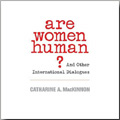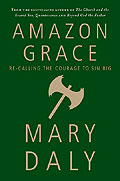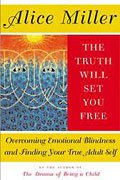Saw this via the Salon Dauo Report from Morgaine at What She Said!
Over 250 million children raped each year...
Morgaine cited a United Nations report:
They include 73 million boys and 150 million girls, according to a United Nations report prepared by Secretary General Kofi Annan’s independent expert, Paulo Sergio Pinheiro. Save the Children Director Dumisani Mnisi, at a workshop closing ceremony for station commanders last Thursday, shared the content of the study with police officers. “The Pinheiro study finds that shocking levels of violence affect the lives of children in all parts of the globe,” Mnisi stated.
The report states that, usually, the [250 million] children are raped by someone within the family circle. It further estimates that between 133 and 275 million children, annually, witness domestic violence.
Pinheiro also found that corporal punishment such as caning and beating was still standard practice in schools in a number of countries, and often results in school drop-outs. He estimates that between 20 and 65 percent of school age children claim to have been verbally or physically bullied in a 30-day period. Also, he reports that 126 million children are involved in hazardous work, often enduring beatings, humiliation and sexual violence by employers while institutionalised children [whether in orphanages or detention facilities] are at a particular risk of violence from the staff responsible for their care including torture, beatings, isolation, restraints, rape and harassment. Meanwhile, violence in the family in the form of harsh punishment is common in both industrialised and developing countries. Children in all regions have reported the physical and psychological hurt they suffer at the hands of their parents and care-givers.
The report also states; “over 500 000 children a year die as a result of homicide with between one and two million treated for violence-related injuries. The majority of violent acts against children are said to be perpetrated by people who are part of their lives such as parents, teachers, schoolmates, employers and care-givers. In only 16 States has all violence against children been prohibited, leaving the vast majority of the world’s child population without adequate legal protection from violence.
“Violence against children incurs extraordinary costs to society and is linked to lifelong social and health problems, including post-traumatic stress disorder, depression, anti-social and aggressive behaviour, substance abuse, lung, heart and liver diseases, impaired academic and work performance, problematic peer relations and greater involvement with the criminal justice system,” states the report.
I agree with Morgaine:
Matriarchal cultures don't view children or their mothers as property. That's a really important concept that we really need to get down under and comprehend its effects. We have to root it out of our psyches. Sexual abuse is not common in undisturbed indigenous cultures. James DeMeo has traced the source of sexual and physical violence against children to a region he calls Saharasia, beginning around 4000 b.c.e. It has spread through modern cultures as patriarchy moved throughout the world. Its origins lie in sexual and somatic repression coupled with violent treatment of infants and children. It's a remnant of a time when dominant cultures reacted to starvation with violence, greed, theft, slavery and genocide overrunning peaceful, agrarian matrifocal societies. Over the millenia, these abberant human behaviors have become institutionalized. We've been taught from infancy that these are natural tendencies that civilization must overcome. We've been taught to admire warriors, robber barons, slave traders - the Stanley Kowalski's and Gordon Gekko's of the world. There is nothing normal or human about this behavior.
Get that. It's not normal. Healthy humans don't wage war, rape, steal, kill one another for any reason. It isn't natural - it's sickness. Hurting each other is sickness. Taking more than you need, taking from one another that which is not freely given is sick. Humans are social, cooperative beings. We have the capacity for empathy - all mammals do. The natural instinct of the human animal is to protect babies. Even other species will protect babies from different animals - I've seen huge dogs lie quietly while kittens nap on their backs, and I've seen more than one pet dog or cat intervene when a parent attempted to "discipline" a child. The irony is that physical "discipline" does just the opposite - violence, aggression, and delinquent behavior in youngsters is a direct result of violent and oppressive treatment.
I know I'm repeating myself. I feel as if I'm shouting in the wind. What will it take to make us wake up to the fact that human beings are naturally peaceful and cooperative? What is going to bring us back to that natural instinct to protect children. To feed them if they're hungry, to soothe them if they're frightened, to allow them to grow strong and unbroken by anger or intimidation? To stop the multi-generational cycle of sexual abuse of children?
[...]
There's a meme going around Live Journal these days that begins with the following quote:
"Why is it that, as a culture, we are more comfortable seeing two men holding guns than holding hands?" - Ernest Gaines
My question is Why is it, as a culture, we find it more necessary to spank a child than to hug it? Both questions have the same answer - patriarchal dominance and erotophobia.
Yup, I agree. And who is perpetrating most of this abuse? Anyone one want to guess? This latest news report didn't say but a 2003-2004 Save The Children paper commissioned by the Alliance Gender Task Force for the UN Global Study on Violence against Children offers this (PDF) summary:
An analysis of the global persistence and even escalation of violence in all areas of life, including homes, communities, institutions, and armed conflicts, reveals that the vast majority of people damaged by the decisions made and the actions carried out by those in power (largely men) are children (and women). For example, children constitute almost half of the 27.4 million refugees and the 30 million displaced people worldwide (http://www.un.org/rights/concerns.htm). Some facts about and forms of violence against children and the different gender impacts follow this introduction.
Particular forms of violence, such as sexual exploitation or incest, occur disproportionately against girls, although some studies show that in some Asian countries sexual abuse of boys is nearly as common as of girls. In addition, other cultural forms of violence, such as dowry related abuse and acid throwing, in Bangladesh, Pakistan and India for instance, only affect girls and women, and carry life-long health consequences (e.g. mutilation; disfigurement) or even result in death.
Self-inflicted violence in the form of eating disorders such as anorexia nervosa and bulimia, increasingly found in Europe, also mainly affect girls. Certain forms of violence, however, such as the recruitment of boys into armed groups and drug gangs, involve a greater proportion of boys as both victims and perpetrators. Other instances of gender-based violence mainly affecting boys are the murders of street boys in Central and South America carried out by police or death squads who argue that they are preventing future violent crimes.
Gender-based violence also occurs in the process of bringing up children in their family homes and in educational institutions where corporal punishment is considered an educational tool (Innocenti Digest, No.2). This kind of violence against the child is also gendered: while physical punishment is more often inflicted upon boys, girls suffer an enormous amount of psychological abuse to force them to conform to traditional gender stereotypes. Assumptions that boys are physically stronger than girls and that physical abuse helps them grow as proper men underlie these differential expressions of gender-based violence. In addition, discriminatory ideas about children being inferior to adults, and that parents are entitled to use violence to educate their children are also seen in the use of punishment as an educational tool.
[...]
It is well documented that men, in general, have power and control over women and girls, often through violence. This appears as a global phenomenon, taking different forms that cross cultures, and being perpetuated through patriarchal structures and by the socio-economic situation of the perpetrators and the abused women and children (UN, 1996). Girls and boys are socialised into differentiated gender roles that place them within unequal structures of power. Gender inequality disempowers girls by giving them unequal access to resources and not allowing them to participate in decisions that affect them within the family and community. Although this seems to be the general treatment both boys and girls receive from adults, discrimination against girls and women and devaluing views of them, disadvantage girls even more than boys in certain matters. Girls, for example, have less access to education than boys because they are primarily seen as future wives and mothers.
Gender inequality is entangled with power relations, with issues of who defines cultural values and practices, and with the wider framework of social relations between families and communities (e.g. racial, ethnic, caste and social class inequalities). The Optional Protocol to the CRC (art. 10.3) recognises poverty and underdevelopment as root causes and facilitating factors of the trafficking of children for the sale of children, child prostitution and pornography. Poverty plays an important role in perpetuating gender-based violence by creating the material background that makes children of poor families vulnerable to certain forms of violence like those mentioned above. Children affected by abuse while living in the streets or working in forced labour, for instance, are denied access to knowledge, information and education. This, in turn, prevents them from improving their economic situations and forces them to raise their own children in poverty, thereby making them vulnerable to violence and continuing the cycle of disadvantage and oppression.
Pitiful, truly pitiful. The statistics for child abuse and violent crime in America don't make the picture any less pitiful. Violence, oppression, abuse is rampant and most of the perps are male. Visit the Dept. of Justice and explore F.B.I. crime stats for proof and the ugly reality.























|